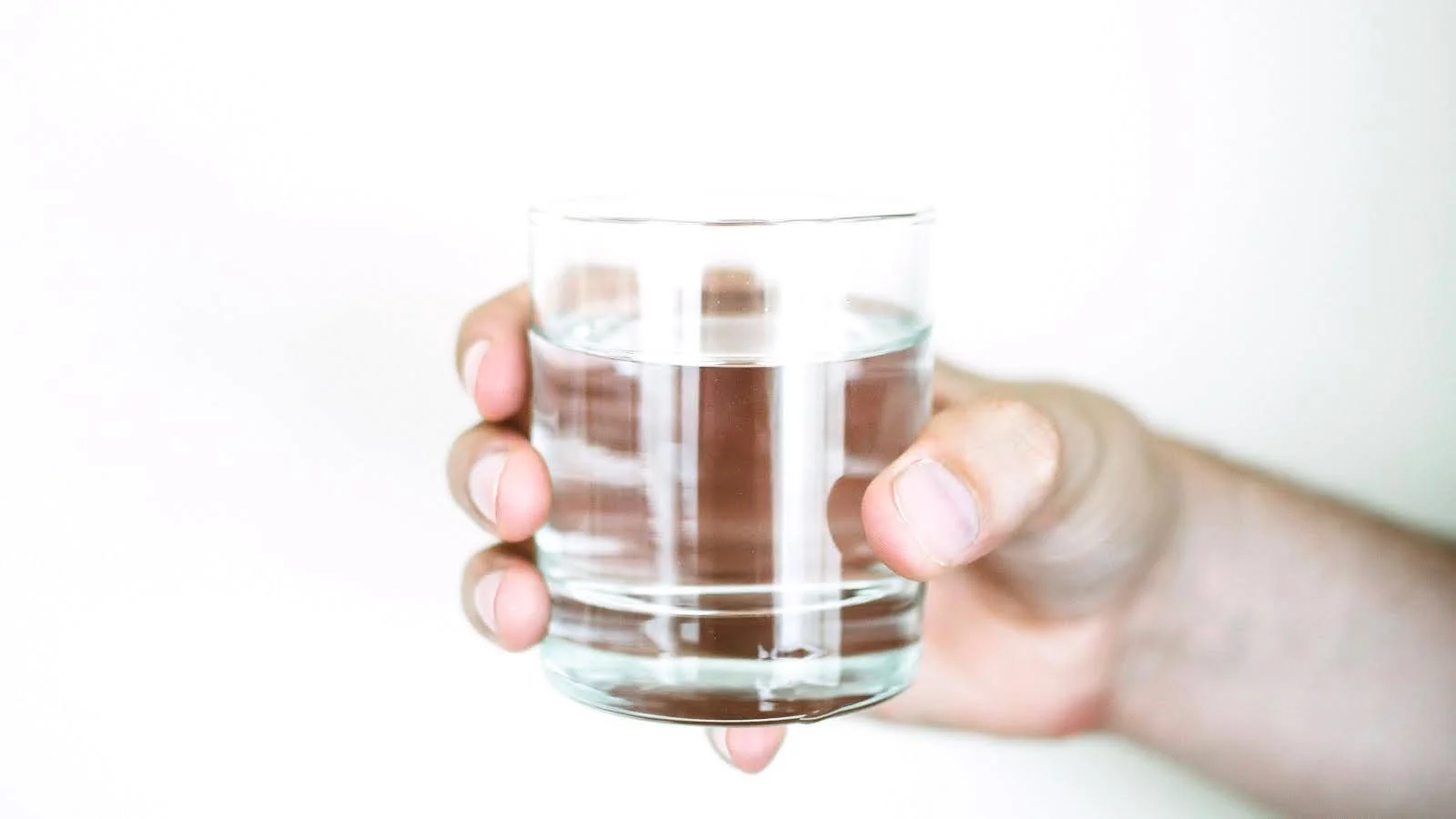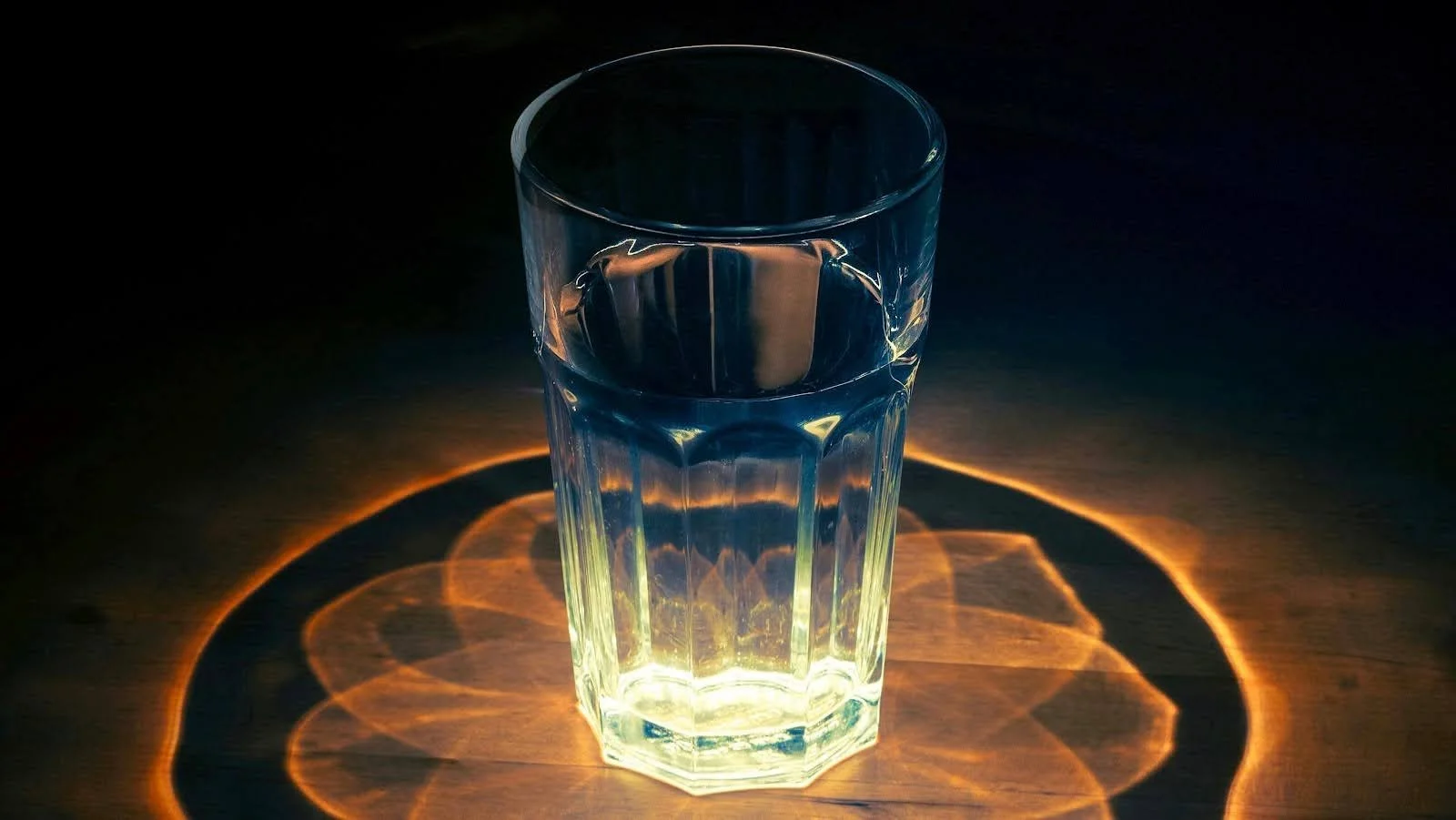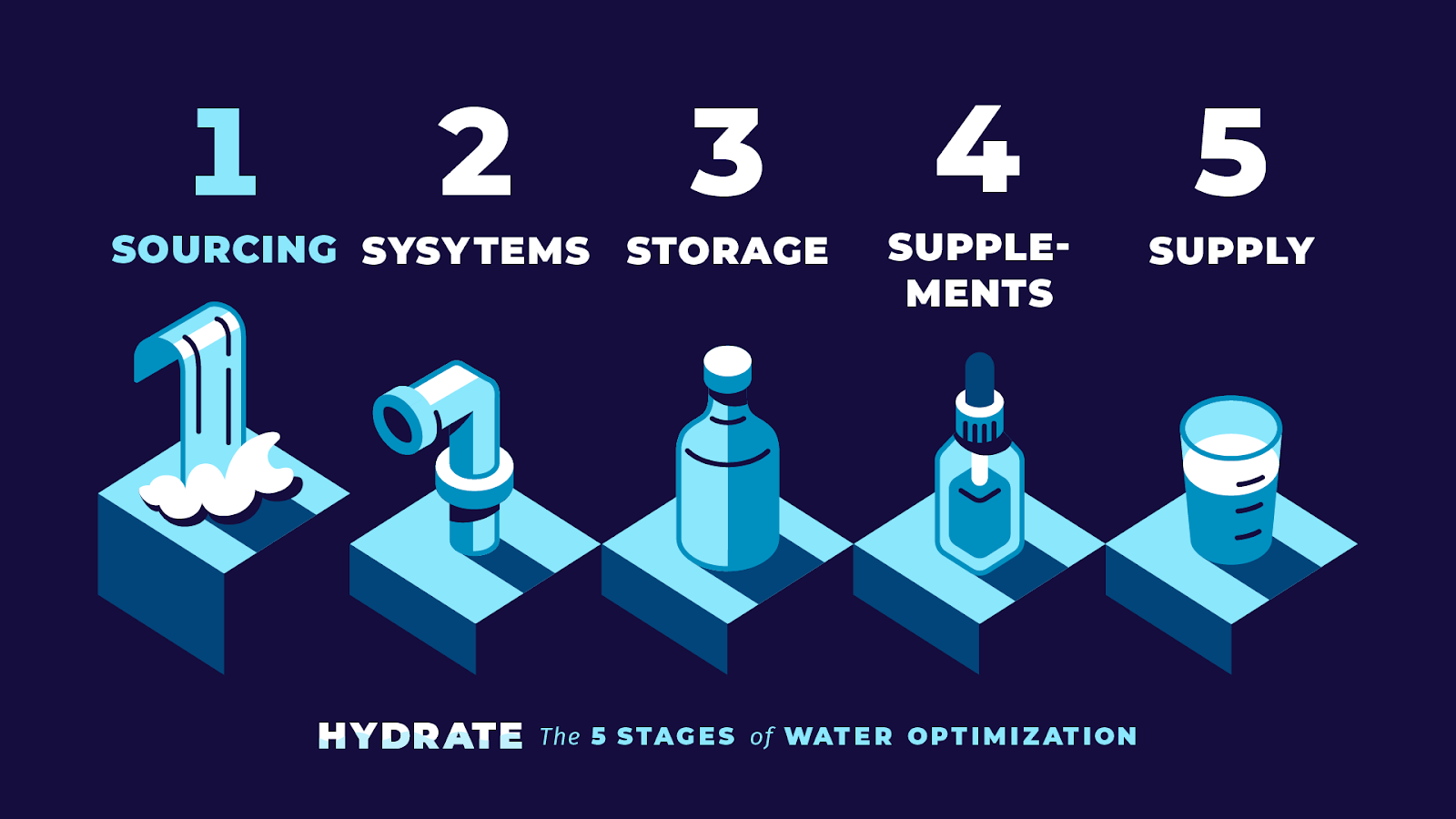Water Confidence & Quality Concerns: What Public Records Reveal
This is Stage 1.2 | SOURCING | of HYDRATE: The 5 Stages of Water Optimization
“High quality water is more than the dream of the conservationists, more than a political slogan; high quality water, in the right quantity at the right place at the right time, is essential to health, recreation, and economic growth.”
Public Water Records May Undermine — Not Instill — “Consumer Confidence”
Each year, all U.S. water treatment facilities are required by law to publish Consumer Confidence Reports (CCRs): technical summaries of the elements, properties, and potential pollutants found in local water sources. These reports indicate whether municipal waters meet legal thresholds for contaminants over the past year, disclose any violations or public notifications issued due to exceedances, and often highlight regional risks such as agricultural runoff, industrial waste, or aging infrastructure.
Despite their name, CCRs don’t always leave readers feeling confident. Many are surprised to learn that “potable” water can legally contain trace amounts of harmful substances — including lead, arsenic, PFAS, chlorine, and a range of other chemical byproducts — as long as they fall within Environmental Protection Agency (EPA) limits, which may not align with the latest scientific research findings or medical guidance.
Greater Awareness Inspires Smarter Action
This article includes links to public water quality data — from both government and independent sources — to help you better understand the tap water you may be drinking, and how its imperfections could be affecting your health and hydration. While public reports can’t replace the precision of in-home testing, they offer a valuable baseline for building a clearer picture of your water’s true qualities. These insights can guide more informed decisions about filtration, enhancement, supplements, and alternative sourcing as you work toward greater water autonomy.
To combat the preventable sickness, lost potential, and chronic suffering tied to dehydration — one of the most consequential and overlooked public health crises of our time — the HYDRATE framework explores both the challenges and solutions of modern-day hydration. Connecting readers with proven tools, technologies, and practices for securing and effortlessly consuming bioactive, nutrient-rich water, this series was created for wellness enthusiasts, biohackers, and individuals seeking greater autonomy over their health.
Drawing on leading-edge research, timeless traditions, and emerging innovations, HYDRATE distills a complex, often overwhelming subject into five distinct, actionable steps:
Evaluate or upgrade your water SOURCING 📍You are here
Improve it through targeted SYSTEMS
Contain it in safe, non-reactive STORAGE
Revitalize it with fortifying SUPPLEMENTS
Align daily SUPPLY strategies with the body’s unique needs
Go to the HYDRATE Home Page for quick access to all the articles or the Series Introduction for a contextual overview of the guiding principles, research insights, and systemic challenges that inspired this protocol, along with a full description of the 5 stages. Use the hyperlinks above to jump into any of the five main articles that contain in-depth guidance, practical strategies, curated product reviews, and other resources for upgrading your personal approach to hydration.
Stage 1 | SOURCING
Companion Articles
Stage 1 | SOURCING | The Best Kits, Tools, & Tech for Drinking Water Quality Testing → Discover the most trusted water testing kits, digital meters, and lab analysis services to reveal your water’s hidden properties – contaminants, mineral balance, strengths, and weaknesses.
1.1 | Origin Stories: The Truth About Conventional Drinking Water Sourcing → A top-level comparison of potable water sources — tap, reverse osmosis, spring, glacier, refill stations, and delivery services.
1.2 | Water Confidence & Quality Concerns: What Public Records Reveal → Learn how to access and interpret U.S. public water records, reports, and databases to better understand the quality of your household drinking water.📍You are here
1.3 | Quality Cues: Simple Experiments to Better Understand Your Drinking Water → These practical, DIY home experiments can provide insights about your water’s visible, sensory, and chemical properties.
DISCLAIMERS: This article is for educational purposes and does not constitute medical advice, diagnosis, or treatment. Guidance, reviews, and recommendations are based on personal testing, consumer feedback, and independent research. While some research and editing were AI-assisted, all final writing and opinions are original works and the intellectual property of CHANNEL ONE. The HYDRATE framework focuses on optimizing regulated, pre-treated water from municipal, public, or commercial systems, not untreated sources such as springs, private wells, or rain catchments. While most findings and insights are framed around practices and standards upheld within U.S. systems, the information shared is intended to help readers make informed, health-conscious choices worldwide.
Consumer Confidence Reports (CCRs)
In the U.S., every community water system that serves more than 15 service connections (or 25 people) must provide an annual Consumer Confidence Report (CCR), also known as a Water Quality Report.
This document discloses:
• Source(s) of the water (rivers, reservoirs, aquifers, etc)
• Treatment methods used (chlorination, filtration, UV light, etc)
• Detected contaminants and their levels
• Compliance with federal and state standards
• Potential health effects for vulnerable populations
Enter your ZIP code to find your local report here: EPA CCR Search Tool. If unavailable online, you can request a printed copy by calling or e-mailing your local water utility.
While CCRs may include some data points that many home tests overlook, it’s also important to recognize that CCRs represent water quality before it leaves your local treatment center — not after it travels through potentially corroded pipes or compromised infrastructure to your tap.
Expert Resources for Understanding Water Quality Reports
CDC: How to Read Drinking Water Quality Reports: This guide from the Centers for Disease Control and Prevention explains the components of CCRs, helping readers understand their water source, detected contaminants, and potential health risks.
Olympian Water Testing: How to Read and Understand Your Water Quality Report: This resource offers a step-by-step approach to deciphering water quality reports, highlighting key contaminants and their health effects.
EPA: Understanding Your Water Quality Report: The infographic featured below from the Environmental Protection Agency provides essential information found in CCRs, including high risk contaminant levels and other health effects.
Source: U.S. Environmental Protection Agency — Understanding Your Water Quality Report (PDF)
Other Public Water Databases
CCRs also don’t account for how “legally safe” levels of chemicals or minerals might affect sensitive individuals, such as those who are pregnant, immunocompromised, or living with chronic health conditions. Thankfully, there are several independent environmental and health organizations that offer expanded reports and recommendations that more deeply consider, analyze, and advise public water consumers about exposure risks and their health implications. Some even offer actionable suggestions and solutions for how to go about independently removing these hazards.
EWG Tap Water Database: Run by the Environmental Working Group who analyze utility reports from across the U.S., flagging contaminants of concern, even when they’re within legal limits, comparing reported levels to what independent health researchers consider safe to identify hidden risks, and also provides filtration suggestions for specific contaminants.
MyTapWater.org: A project by the Environmental Law & Policy Center, this platform presents simplified water safety profiles based on utility-provided data. It tells you how your water compares to the Environmental Protection Agency (EPA) standards and may include historical contamination trends, chemical-by-chemical summaries, and health risk flags.
Up Next
1.3 | Quality Cues: Simple Experiments to Better Understand Your Drinking Water: This article outlines simple, science-fair-style observation methods you can perform at home to assess the basic qualities of your water — from mineral density and electrical conductivity to subtle clues detected through taste, smell, and visual inspection. These low-tech, cost-effective experiments offer curiosity-piquing insights and can help you develop a more intimate relationship with your water — while pointing you toward the next steps in your optimization journey.
Or Jump Ahead
Stage 2 | 11 Systems for Biohacking Better Quality Drinking Water: This article critically reviews a wide range of household products, appliances, and systems designed for independent, at-home water optimization — from traditional, organic approaches to modern filtration methods and advanced, leading-edge technologies. Structured as a comprehensive buyer’s guide for health-conscious public water consumers, it offers solutions for a variety of lifestyles, budgets, and comfort levels.
< PREVIOUS POST | NEXT POST >
Quick Links
HYDRATE: The 5 Stages of Water Optimization
HYDRATE Series Home Page → Browse all 9 articles at a glance.
Series Introduction → Optimize Your Water: The Clearest Path to Better Health & Hydration
Stage 1 | SOURCING → The Best Kits, Tools, & Tech for Drinking Water Quality Testing
1.1 → Origin Stories: The Truth About Conventional Drinking Water Sourcing
1.2 → Water Confidence & Quality Concerns: What Public Records Reveal 📍You are here
1.3 → Quality Cues: Simple Experiments to Better Understand Your Drinking Water
Stage 2 | SYSTEMS → 11 Systems for Tapping Into Better Quality Drinking Water
Stage 3 | STORAGE → The Most Trusted Water Bottles & Materials for Quality Controlled Storage
Stage 4 → SUPPLEMENTS | 11 Simple Supplements That Will Radically Transform Your Drinking Water
Stage 5 | SUPPLY → 11 Hydration Hacks & Supply Strategies for the New Human





